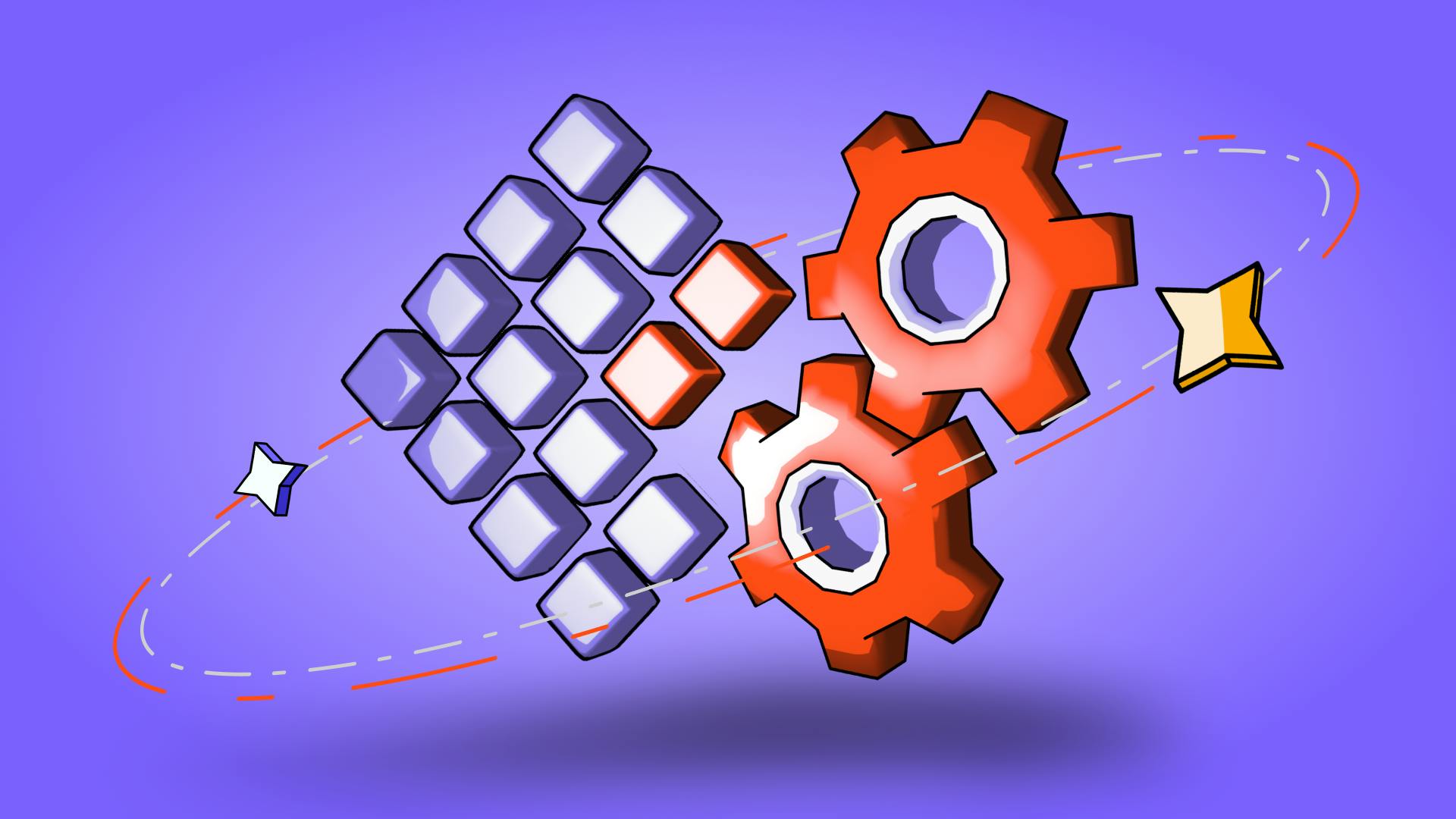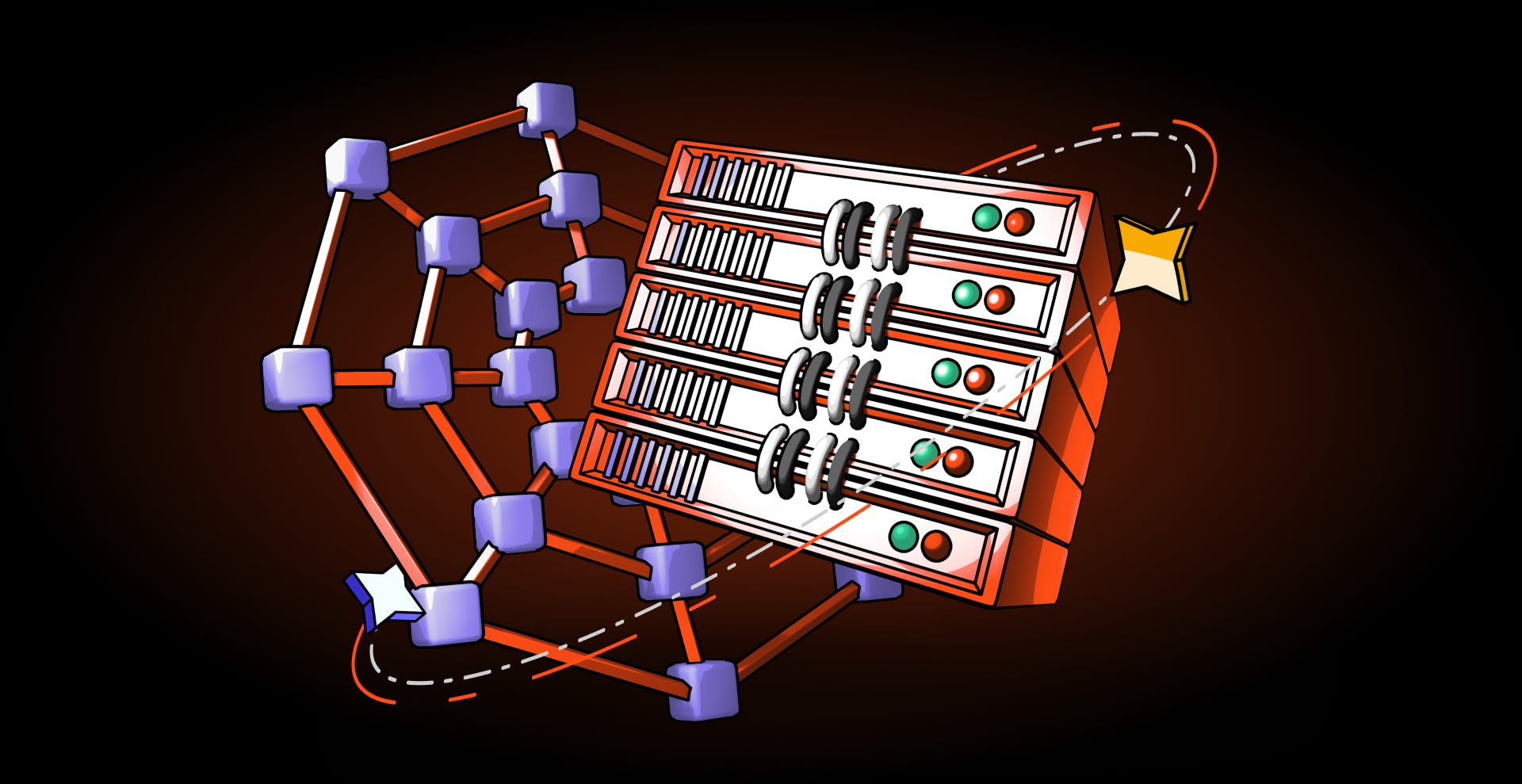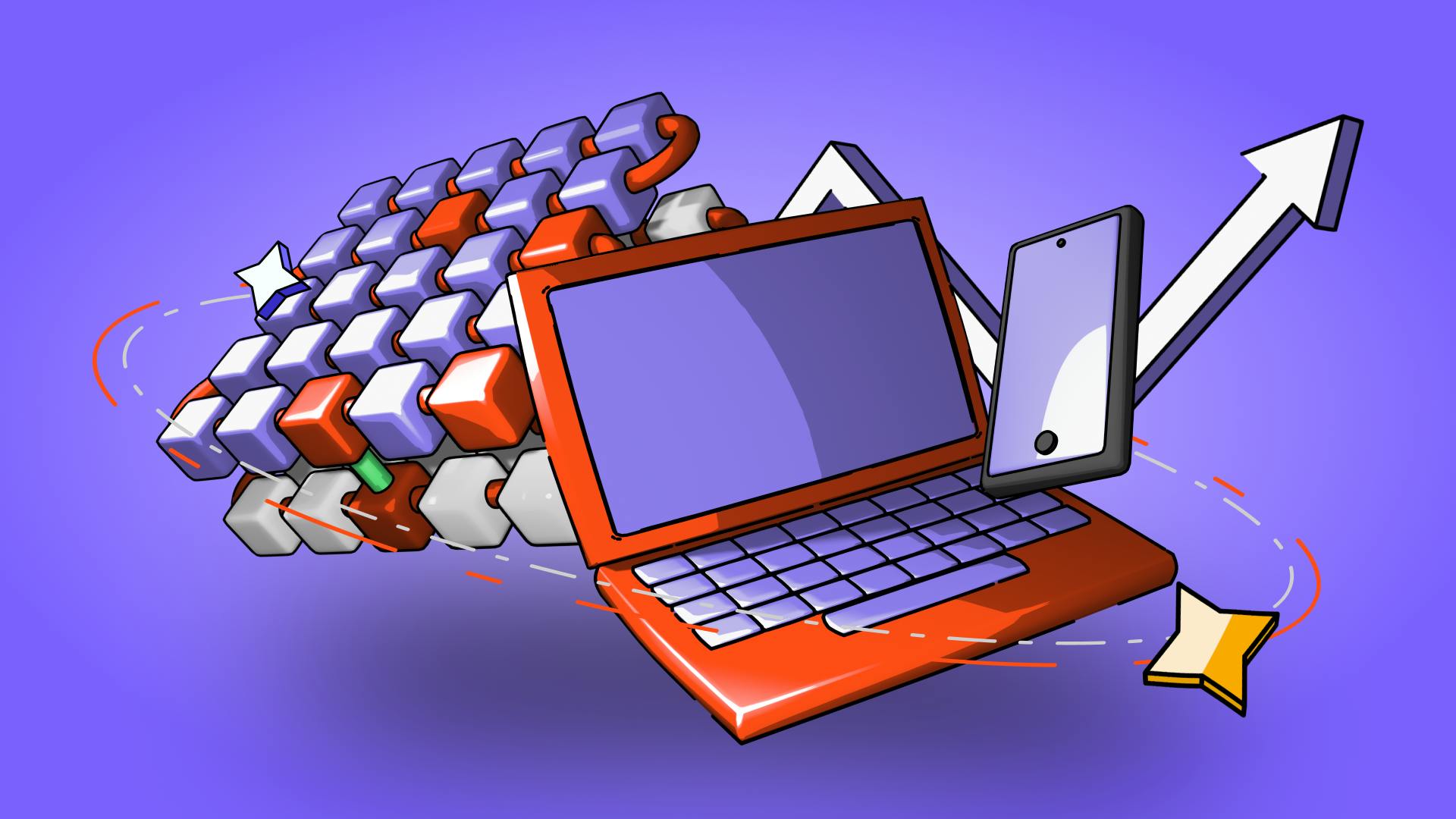Blockchain Scalability: Solutions, Challenges and Future
December 5, 2025

by Kamil S
December 5, 2025
Blockchain technology, as we understand it today, traces its roots to the conceptual groundwork laid by Stuart Haber and W. Scott Stornetta in the early 90s. They proposed a cryptographically secure chain of blocks, envisioning a decentralized and tamper-resistant digital ledger. Even so, going farther back in time, we can trace the conceptual lineage of distributed ledger systems to the works of David Chaum - a computer scientist and cryptographer at Berkeley.
The practical implementation of this concept, however, came to fruition with the introduction of Bitcoin in 2009 by the mysterious Satoshi Nakamoto. Bitcoin served as the pioneering large-scale application of blockchain technology, showcasing its potential to create a decentralized, transparent, and secure ledger. Generally speaking, blockchain networks operate on a peer-to-peer network, ensuring transparency and immutability of data. Each block in the chain contains a cryptographic hash of the previous block, linking them securely and forming a tamper-resistant record.
Scalability stands as a critical aspect in the evolution of blockchain technology. As adoption surges and transaction volumes escalate, the inherent challenge lies in ensuring that the network can handle increased demand without compromising security and efficiency. Scalability directly impacts transaction speed, cost, and overall system performance. Recognizing its paramount importance is vital to unlocking blockchain's full potential across diverse industries.
Blockchain technology, while transformative, grapples with inherent technical limitations that directly impact its scalability. Two pivotal factors within this realm are transaction speed and block size. Transaction speed denotes the time required to process and confirm transactions, a parameter crucial for widespread adoption. Simultaneously, the size of each block in the blockchain presents a constraint, affecting the volume of transactions that can be accommodated within a given timeframe. Network congestion issues further compound these challenges, emphasizing the imperative need for scalable solutions to enhance operational efficiency.
As scalability becomes a central focus, intricate trade-offs emerge between scalability and security. Maintaining the decentralized and secure nature of blockchain poses challenges when attempting to scale operations. Striking a delicate balance becomes imperative to prevent compromising the integrity of the network.
In the face of these challenges, ongoing research and development are essential to identify and implement robust security measures that align with the scalability goals. From cryptographic advancements to consensus mechanism refinements, the evolving landscape of blockchain security is explored to ensure a resilient foundation as the technology continues to scale.
Economic barriers add another layer to the scalability challenge, with high transaction fees acting as a deterrent to widespread adoption. Additionally, the risk of centralization looms, as economic constraints may inadvertently lead to a concentration of control, undermining the decentralized ethos inherent to blockchain.
Addressing these economic challenges requires strategic solutions. Innovations in fee structures, incentive models, and sustainable economic policies are vital to encourage widespread participation without imposing prohibitive costs.

At the foundational Layer 1, innovative approaches are deployed to fortify scalability and address these challenges head-on. Sharding emerges as a key player in this pursuit. This involves the meticulous partitioning of the blockchain into manageable shards, a technique that not only redefines transaction processing but also efficiently distributes the computational load. Simultaneously, consensus mechanism innovations, especially the widespread adoption of Proof of Stake (PoS), has the potential to enhance the efficiency of transaction validation processes. However, some argue that consensus mechanisms like PoS may contribute to a more centralized ecosystem.
Complementing these foundational efforts, Layer 2 solutions are introducing additional strategies to further scale blockchain networks. State channels and sidechains, integral components of Layer 2, play a pivotal role by enabling off-chain transactions. This not only reduces congestion on the primary blockchain but also enhances transaction processing speed. Rollups, encompassing Zero-Knowledge Rollups and Optimistic Rollups, further optimize transaction processing by bundling and submitting batches of transactions to the main chain, providing a robust mechanism to boost transaction throughput and mitigate congestion effectively.
In parallel, interoperability enhancements add a layer of complexity to scalability goals. Cross-chain communication, a cornerstone of interoperability, facilitates seamless interaction between different blockchain networks. This interconnectedness not only enriches the overall blockchain ecosystem but also fosters a more collaborative and scalable environment. Additionally, protocol bridges act as vital conduits for communication between blockchains with differing protocols, creating a unified and scalable blockchain landscape.
These combined advancements represent a significant stride forward in addressing the intricate scalability challenges that contemporary blockchain networks face. By embracing innovative solutions at both the foundational and secondary levels, the blockchain community continues to pave the way for a more scalable, efficient, and interconnected future.
The blockchain landscape is currently marked by a dynamic array of projects, each contributing to the evolution and expansion of decentralized technologies. Among the noteworthy networks, Chainlink (LINK) takes center stage, making substantial contributions to scalability through innovative solutions.
Chainlink stands out in the blockchain realm primarily due to its cross-chain system that significantly enhances scalability. By fostering interoperability between different blockchains, Chainlink acts as a seamless bridge, allowing for efficient communication and data exchange. This interoperability not only reduces congestion on individual networks but also ensures enhanced data accessibility for decentralized applications (DApps). Chainlink's decentralized oracle network further reinforces data reliability and contributes to the overall security and scalability of the blockchain ecosystem.
Beyond Chainlink, several projects are already making a significant impact on the blockchain landscape:\
Solana (SOL) stands out for its exceptional performance, boasting the capacity to process up to 65,000 transactions per second, as stated by the team. While this number may have many considerations, nevertheless it is broadly acknowledged that the high throughput makes Solana an ideal choice for applications demanding rapid and efficient transaction processing.
Cardano (ADA) adopts a proof-of-stake blockchain model, emphasizing energy efficiency. With a multi-layered architecture, Cardano enhances flexibility in smart contract design and facilitates platform upgrades. This approach positions Cardano as a sustainable and adaptable blockchain solution.
Polygon (MATIC) is a scaling solution empowering Ethereum developers to construct scalable and cost-effective applications, contributing to the broader scalability goals of the Ethereum ecosystem. Polygon is utilizing a combination of Layer 2 scaling solutions, sidechains, and a versatile PoS consensus mechanism.
Avalanche (AVAX) is a blockchain offering high scalability and low transaction fees. Avalanche stands out by seamlessly accommodating Ethereum developers through Solidity's out-of-the-box compatibility. This blockchain architecture finds particular favor in the decentralized finance (DeFi) space, where low transaction costs and rapid scalability are paramount.
Polkadot (DOT) operates by connecting various blockchains as part of its multi-chain network. It enables interoperability by allowing different blockchains, referred to as parachains, to communicate with each other. With this, it opens avenues for the development of interoperable applications, fostering a more interconnected blockchain ecosystem.
As these projects unfold further, their contributions to the blockchain space will likely shape the future of decentralized technologies. Whether through enhancing smart contract capabilities, addressing scalability concerns, or fostering interoperability, each project plays an important role in advancing the possibilities of blockchain technology on a global scale.
Blockchain scalability holds the promise of transformative advancements. As we explore the future, emerging technologies and theoretical models stand out as key drivers shaping the trajectory of scalability.
Quantum Computing and Blockchain
Quantum computing's unparalleled processing power has the potential to revolutionize the operational dynamics of blockchain systems. By addressing complex mathematical problems at an exponential pace, quantum computers offer a quantum leap in transaction processing, mitigating scalability concerns that have persisted in traditional blockchains.
AI Integration in Blockchain Scalability
AI's ability to learn and adapt dynamically positions it as a powerful ally in addressing scalability challenges. Through machine learning algorithms, AI can optimize transaction processing, streamline consensus mechanisms, and adaptively respond to evolving network demands. This symbiosis of AI and blockchain may not only enhance the efficiency of existing systems but also lay the groundwork for adaptive and scalable blockchain networks that can intelligently evolve in response to the complexities of modern transactions and user interactions.
The Role of Regulation and Compliance
As we peer into the future, the role of regulation is poised to be a defining factor in shaping the scalability dynamics of blockchain networks. Regulatory frameworks are expected to set the parameters within which blockchain systems must operate, impacting their scalability and the manner in which they integrate with existing financial and technological ecosystems.
Anticipating this regulatory evolution, blockchain developers and stakeholders are navigating a complex terrain, striving to align technological innovations with forthcoming compliance requirements. The regulatory environment, often viewed as a double-edged sword, not only introduces constraints but also provides a framework for legitimacy and widespread adoption. Striking a delicate balance between fostering innovation and ensuring adherence to legal and compliance standards is crucial for the sustainable scalability of blockchain networks.
Potential for Mass Adoption and Mainstream Integration
As the technological landscape evolves, blockchain is anticipated to transcend its current niche status, becoming an integral component of various industries and sectors. The potential for mass adoption lies not only in the realm of cryptocurrency but extends to diverse applications such as supply chain management, healthcare, finance, and beyond.
The key catalyst for this surge in adoption rests on the continuous refinement of user-friendly interfaces and intuitive applications that demystify blockchain complexities. Blockchain's inherent traits of transparency, security, and decentralization position it as a solution to contemporary challenges, fostering a paradigm shift in how individuals and businesses interact with digital systems.
Our foresight encompasses a future where blockchain seamlessly integrates with existing technologies, providing enhanced efficiency, security, and transparency. Cryptocurrencies may become a standard medium of exchange, and decentralized applications (dApps) could proliferate, revolutionizing industries by mitigating inefficiencies and unlocking new possibilities.
Collaboration between blockchain projects, governments, and traditional institutions is expected to play a pivotal role in realizing this vision. As regulatory clarity increases, businesses and individuals are likely to gain confidence in incorporating blockchain into their operations. The next decade holds the promise of a blockchain-powered era, where mass adoption and mainstream integration signify not just a technological trend but a fundamental shift in the way we conceive and engage with digital innovation.
The landscape of blockchain scalability is both intricate and dynamic, characterized by persistent challenges, innovative solutions, and a promising future. As we recap key points, it's evident that the significance of scalability cannot be overstated in the evolution of blockchain technology. From the foundational concepts introduced by Haber and Stornetta to the groundbreaking implementation in Bitcoin by Satoshi Nakamoto, blockchain has undergone a remarkable journey.
The scalability challenges within blockchain are multifaceted. Technical limitations, security concerns, and economic barriers pose formidable challenges. Transaction speed, block size, intricate trade-offs, high fees, and centralization risks demand strategic and innovative answers.
Layer 1 solutions, such as sharding and consensus mechanism innovations, address these challenges at the foundational level. Layer 2 solutions, including state channels and rollups, complement these efforts by introducing additional chains. Interoperability enhancements foster a more interconnected blockchain ecosystem.
Projects like Chainlink, Solana, Cardano, Polygon, Avalanche, and Polkadot contribute significantly to overcoming scalability challenges. Chainlink's cross-chain system and decentralized oracle network, Solana's high throughput, Cardano's proof-of-stake model, Polygon's friendly developer language, Avalanche's low transaction fees, and Polkadot's multi-chain network collectively shape the future of decentralized technologies.
In the foreseeable future, the integration of emerging technologies, such as quantum computing and artificial intelligence (AI), opens up unprecedented possibilities. Quantum computing may have the ability to address complex mathematical problems at an exponential pace, revolutionizing transaction processing. Simultaneously, the adaptive capabilities of AI and its machine learning algorithms can streamline consensus mechanisms and respond adaptively to the evolving demands of blockchain networks.
Predictions for the next decade foresee the critical role of regulation and compliance, providing a framework for legitimacy and widespread adoption. The potential for mass adoption and mainstream integration envisions a future where blockchain seamlessly integrates into various industries, transforming how we interact with digital innovation.
In essence, blockchain scalability is a continuous journey of innovation and adaptation. The challenges encountered today serve as catalysts for the transformative advancements that will define the blockchain-powered era of tomorrow. As we navigate the future, the collaborative efforts of blockchain projects, regulatory bodies, and traditional institutions will play a pivotal role in shaping a scalable, efficient, and interconnected blockchain ecosystem.
Join the Coinmetro community on Discord and Telegram, where forward-thinking traders and investors gather to share insights, explore new opportunities, and dive deep into the world of cryptocurrencies. Should you need any help, feel free to reach out to our world-class Customer Support Team via 24/7 live chat or email at hello@coinmetro.com.
To become a Coinmetro user today, Sign Up now, or head to our new Exchange if you are already registered and experience our premium trading platform.
Tags
Related Articles

Regulatory Sandboxes: Fostering Crypto Innovation Within Legal Frameworks
The cryptocurrency industry’s fast rise fuels an important debate. Innovation aims to transform finance, enhancing speed and access. Yet, regulators…
5m

Crypto Options Trading: Strategies and Market Insights
Cryptocurrency markets have rapidly expanded beyond simple buying and selling. One of the most significant developments has been the rise of…
6m

The Rise of Social-Fi: Blending Social Media with Decentralized Finance
In recent years, social media and finance have started to merge, creating Social-Fi. This concept blends the engagement of social platforms with…
6m

DeFi Insurance Platforms to Watch in 2024
Decentralized Finance (DeFi) insurance addresses the growing need for insurance against hacks, smart contract failures, and other DeFi-related risks.…
7m